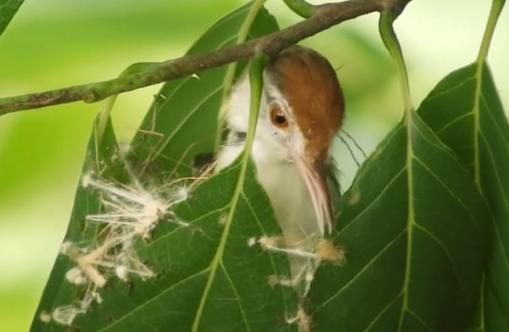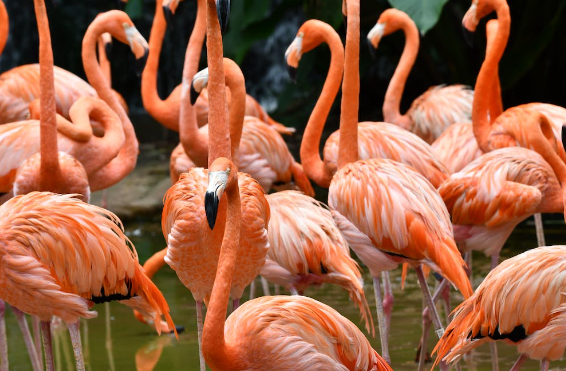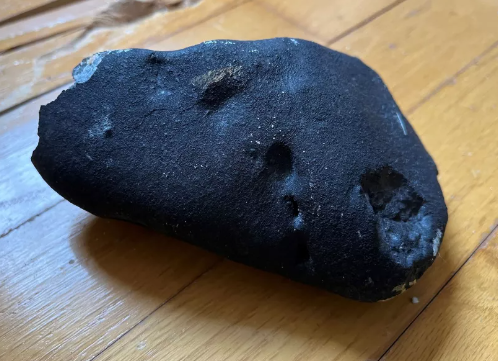바느질 하는 새 - 테일러버드
Tailorbirds get their name from the way their nest is constructed. The edges of a large leaf are pierced and sewn together with plant fibre or spider silk to make a cradle in which the actual nest is built.
Tailorbirds는 둥지를 짓는 방식에서 이름을 따왔습니다. 큰 잎사귀의 가장자리를 뚫고 식물 섬유 또는 거미줄과 함께 꿰매어 실제 둥지를 지어 요람을 만듭니다.
A common warblerlike bird with a green back, a reddish crown, and a long bill. It gets its name from the way in which it builds its nest by stitching leaves together. A ubiquitous inhabitant of parks, gardens, and wooded areas across South and Southeast Asia.
초록색 등, 붉은색 왕관, 긴 부리를 가진 일반적인 꾀꼬리 같은 새입니다. 잎사귀를 꿰매어 둥지를 짓는 방식에서 이름을 얻었습니다. 남아시아와 동남아시아 전역의 공원, 정원, 숲이 우거진 지역의 어디서나 볼 수 있습니다.

They range in size from 10 to 14 cm and weigh 6 to 10 g. They have short rounded wings, a long tail, strong legs and a sharp bill with curved tip to the upper mandible.
크기는 10~14cm이고 무게는 6~10g입니다. 그들은 짧고 둥근 날개, 긴 꼬리, 강한 다리, 위쪽 턱까지 끝이 구부러진 날카로운 부리를 가지고 있습니다.
They forage for insects and have been known to feed on a range of beetles and bugs. They are attracted to insects at flowers and are known to favour the inflorescences of mango.
그들은 곤충을 찾아다니며 다양한 종류의 딱정벌레와 벌레를 먹는 것으로 알려져 있습니다. 그들은 꽃에있는 곤충에 끌리고 망고의 꽃을 선호하는 것으로 알려져 있습니다.

The breeding season is March to December peaking from June to August in India, coinciding with the wet season. In Sri Lanka the main breeding periods are March to May and August to September, although they can breed throughout the year.
번식기는 3월에서 12월이며, 인도에서는 6월에서 8월이 절정이며 우기와 일치합니다. 스리랑카에서 주요 번식기는 3월~5월과 8월~9월이지만 일년 내내 번식할 수 있습니다.
A tailorbird makes a series of holes with its long slender bill and then draws plant fibre, insect silk, or even stolen household thread through the holes to form separate loops, which are knotted on the outer side.
테일러버드는 길고 가느다란 부리로 일련의 구멍을 만든 다음 식물 섬유, 곤충 실크 또는 심지어 훔친 가정용 실을 구멍을 통해 끌어당겨 별도의 고리를 만들고 바깥쪽에 매듭을 짓습니다.


























